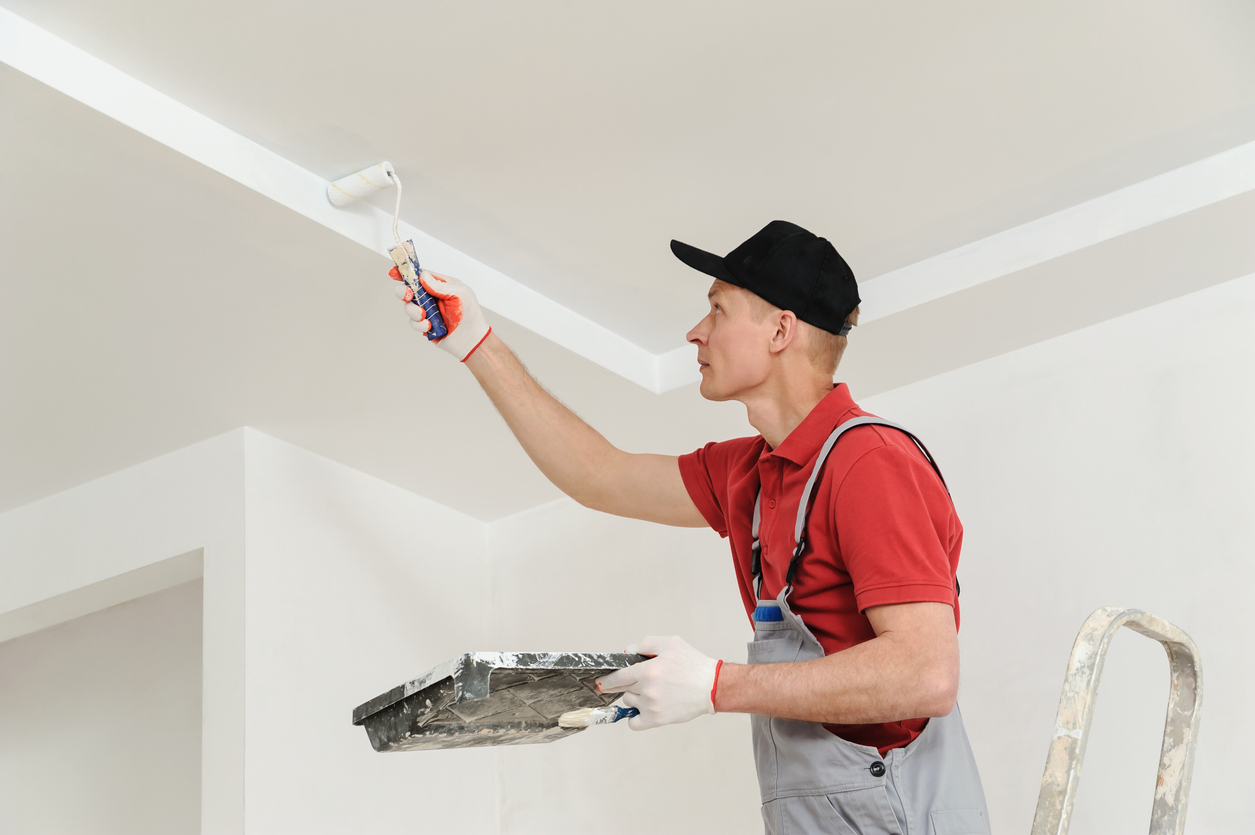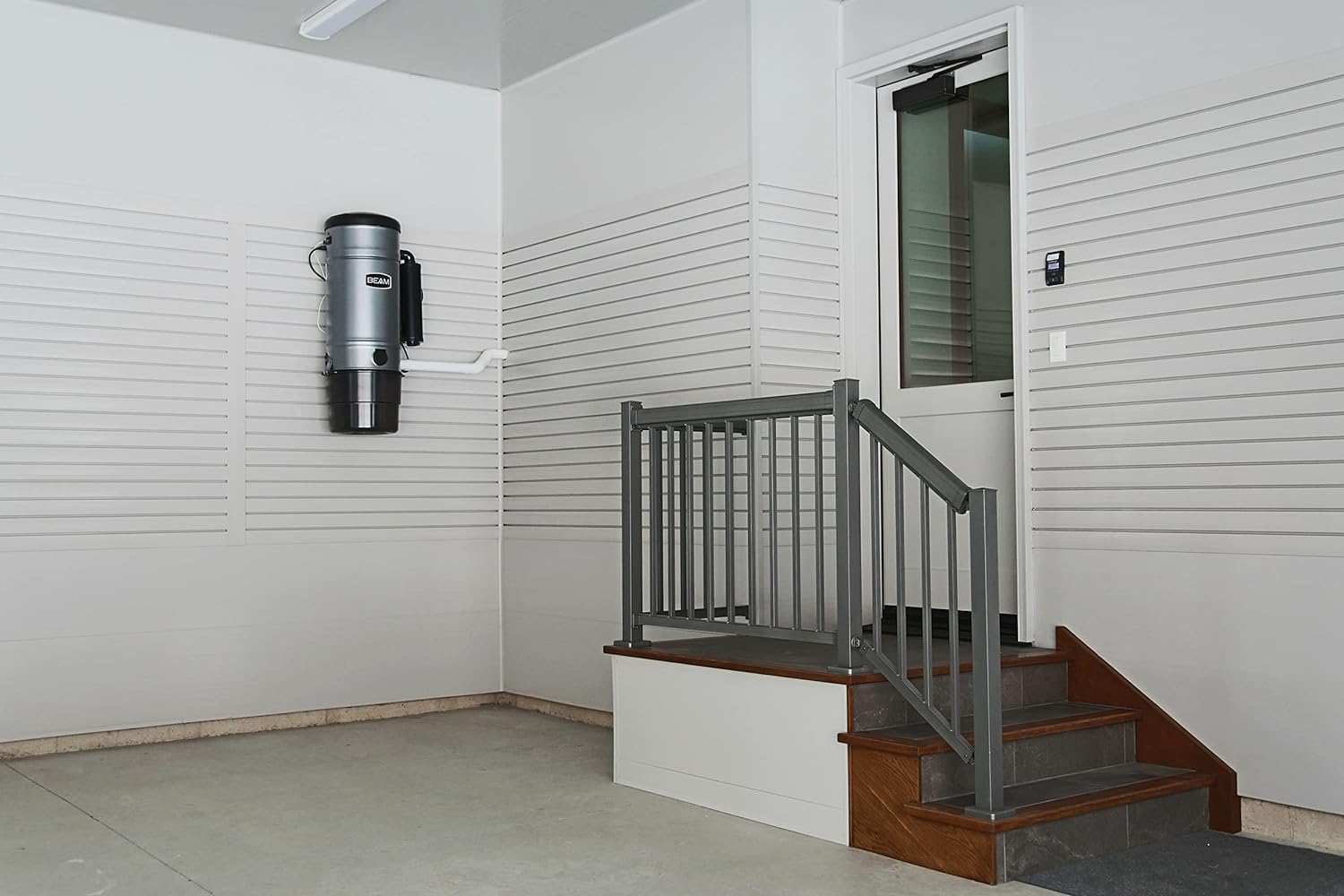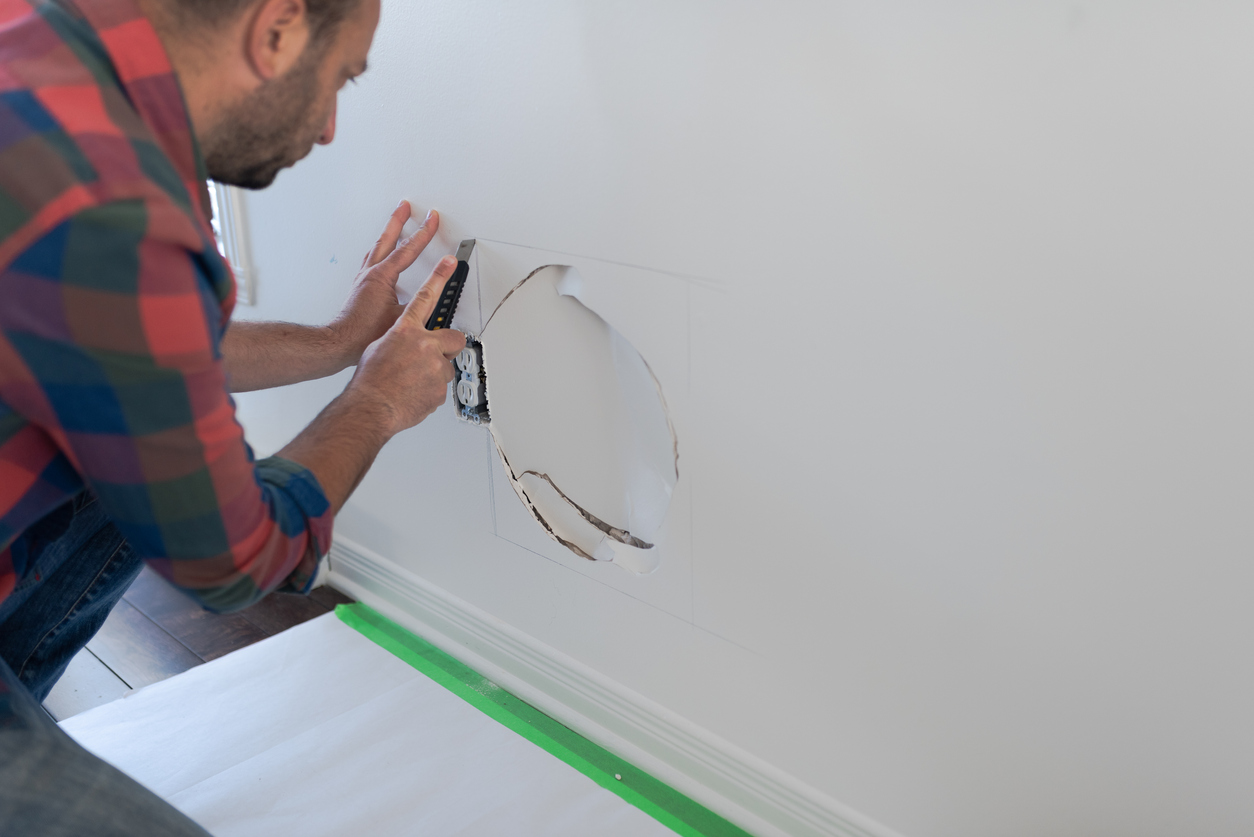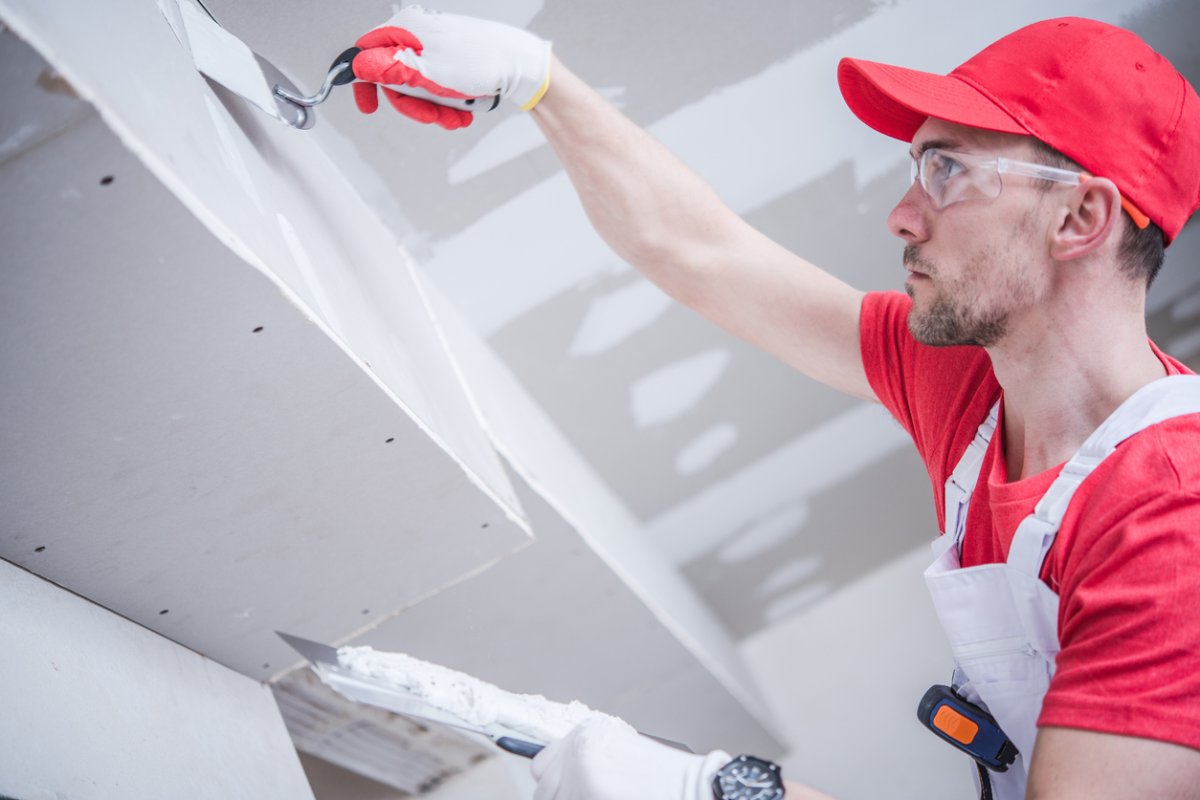We may earn revenue from the products available on this page and participate in affiliate programs. Learn More ›
Trusscore panels are one of the many drywall alternatives; they’re made from durable PVC and are known for their strength and resistance to moisture. Drywall, while a common choice, comes with its own set of costs, such as drywall installation cost and drywall repair cost. Trusscore pricing typically includes the cost of the panels themselves, and it’s important to check Trusscore reviews to get an idea of what others have paid for their projects. Drywall may seem more cost-effective at the outset due to its lower material cost, but the installation of drywall can incur additional labor costs, including the labor cost to tape and mud drywall, which are essential for achieving a smooth finish.
Trusscore panels are highly durable and resistant to moisture, making them a cost-effective choice in areas prone to humidity, such as basements. Drywall, while cheaper to install, may require frequent repairs and maintenance, adding to the overall cost over time. This includes expenses like the cost to remove drywall if it becomes severely damaged. It’s also worth noting that Trusscore PVC panel prices may vary depending on the specific product and supplier, so shopping around and comparing prices is advisable.
When evaluating Trusscore vs. drywall costs, homeowners will need to consider several factors. Both materials have their advantages and drawbacks, and understanding the financial aspect can help homeowners make an informed choice for their project. Homeowners will want to consider factors such as the long-term durability, maintenance, and the specific needs of the project. By carefully evaluating these aspects, homeowners can make a well-informed choice that aligns with both their budget and the goals for their interior walls.
1. Trusscore Wall&CeilingBoard has a higher up-front cost than traditional drywall.
Trusscore Wall&CeilingBoard typically has a higher up-front cost compared with that of traditional drywall, and the price difference is an essential factor for homeowners to consider when deciding between the two materials. Trusscore panels are made from PVC and are renowned for their durability and resistance to moisture. These qualities make it an excellent choice for spaces where moisture is a concern, such as basements, bathrooms, and kitchens. This enhanced performance comes at a premium, contributing to its higher initial cost. For exact pricing for Trusscore panels, it’s recommended that homeowners get in touch with a retailer near them, but for a 6-foot-by-10-foot laundry room, Trusscore panel installation cost is $1,050, an 18-foot-by-24-foot basement can cost $3,525, and a 20-foot-by-20-foot garage can cost $3,975.

Traditional drywall is often favored for its lower material cost. The cost of drywall ranges from $12 to $20 per panel, with many homeowners spending $15 on average. The average cost to install drywall in a smaller room, such as a bathroom, can range from $430 to $500, while a larger area, such as a living room, can cost from $960 to $2,800. The cost to drywall a basement may be less because this area is typically not finished with the same high-quality materials that are used in other areas of the house.
Additional cost considerations are related to screws, mud, tape, sandpaper, and joint compound, but other significant cost factors can include permit fees, demolition and removal costs, and transportation. It’s important to note that the cost analysis doesn’t end with materials alone. The installation of drywall involves additional expenses, such as labor costs for hanging, taping, and mudding, to achieve a smooth and finished surface. In humid or moisture-prone areas, drywall may also require more frequent repairs or replacement, increasing its long-term cost. Drywall repair cost runs from $294 to $876, with the national average at $573. The final cost depends on the type of repair needed, the scope of the damage, and the cause and location of the damage. There are several more budget-friendly alternatives to drywall, which include plywood, beadboard, MDF (medium-density fiberboard), gypsum board, and cement board.
2. However, Trusscore is easier to install, which can mean lower labor costs than homeowners would pay for drywall installation.
One of the advantages of Trusscore is its ease of installation, which can translate into lower labor costs for homeowners compared with the cost of traditional drywall installation. This factor can significantly influence the overall equation and make Trusscore a more cost-effective choice for certain projects.

When it comes to installing traditional drywall, the process involves several labor-intensive steps, including hanging the drywall sheets, taping the seams, applying multiple layers of mud, and sanding for a smooth finish. These tasks require skill and time, often leading to higher labor costs if professionals do the job. Even if a homeowner decides to take the DIY route, drywall installation can be quite challenging, and mistakes can result in additional expenses for repairs and redoing the work. The labor cost to hang drywall ranges from $0.15 to $0.65 per square foot, and mudding drywall runs from $0.40 to $0.70 per square foot. Sanding and priming costs from $0.10 to $0.50 per square foot, and finishing the drywall is $0.50 to $1.15 per square foot. Overall, combining all these costs equals between $1.15 and $3 per square foot. Mudding involves applying many thin coats of compound to the screw indentations and joints in drywall. For homeowners who want to DIY this project, knowing how to mud drywall is an essential skill.
Trusscore panels are designed with ease of installation in mind. They can be quickly installed, thanks to their interlocking system and lightweight nature. Homeowners with basic DIY skills may find it more manageable to install Trusscore panels themselves, further reducing labor costs. For larger projects or when professional installation is needed, the simplified installation process of Trusscore can still lead to cost savings compared with the labor-intensive nature of drywall installation.
While Trusscore may have a higher up-front material cost, the potential for lower labor costs due to its ease of installation can balance out the overall expenses and make it a cost-effective choice for many homeowners, especially for smaller projects or those with a limited budget for labor.
3. Trusscore is also longer lasting and easier to maintain than drywall, which means lower costs in the long term.
This is another crucial point in favor of Trusscore over traditional drywall: its long-term durability and lower maintenance costs. This aspect adds to the overall cost-effectiveness of Trusscore panels.
Trusscore’s PVC construction makes it highly resistant to moisture, mold, and mildew. Unlike drywall, which can deteriorate when exposed to moisture, Trusscore panels maintain their integrity, even in damp or humid environments. This resilience translates to reduced long-term maintenance costs. Homeowners won’t need to worry about regular repairs or replacements due to water damage or mold growth, which are common issues with drywall. Trusscore is also easier to clean and maintain. Its smooth surface can be quickly wiped down, making it an excellent choice for areas that require frequent cleaning.
4. Drywall can be damaged more easily than Trusscore, which means homeowners may need to pay for repairs over the life of the material.
This is another significant cost consideration with traditional drywall: its susceptibility to damage and the resulting need for repairs over the material’s lifespan. This ongoing repair requirement can add up and impact the overall cost-effectiveness of drywall compared with Trusscore.

Drywall is relatively fragile and can be easily damaged by impacts, moisture, or furniture bumping into walls. Common issues include dents, cracks, and holes, which often need repair. Drywall can also be damaged from hanging heavy art on the walls, and knowing the different types of drywall anchors can help eliminate the potential for this type of damage. Homeowners may need to spend money on materials and labor to patch and repaint damaged drywall surfaces, especially in high-traffic areas of the home. Learning how to hire the best painting and drywall repair service is something every homeowner will benefit from.
Trusscore’s PVC panels are known for their durability and resistance to damage. They can withstand impacts, moisture, and even the occasional mishap without showing signs of wear and tear. This reduced susceptibility to damage means fewer repair costs over time, leading to potential long-term savings.
5. Ultimately, homeowners will need to decide whether they want to pay the higher up-front cost for Trusscore in exchange for lower labor and maintenance costs, or whether traditional drywall best fits their budget.
In the end, the choice between Trusscore and traditional drywall boils down to the homeowner’s individual priorities and budget considerations. It’s a decision that needs to be made after carefully evaluating the trade-offs between up-front costs, labor expenses, and long-term maintenance requirements.
If homeowners are willing to invest more up front, Trusscore can offer several advantages, including lower labor costs due to its ease of installation, minimal maintenance costs over the years, and greater durability, especially in moisture-prone areas. These benefits can lead to potential cost savings and a longer-lasting, hassle-free wall solution.
Traditional drywall may be more budget-friendly initially, but it can come with higher labor costs, potential repair expenses, and a shorter lifespan. It might be a suitable choice for projects with a tight budget, but homeowners will need to be prepared to repair drywall on their own or pay for the maintenance and repair costs that can accrue over time.
Source: Trusscore


